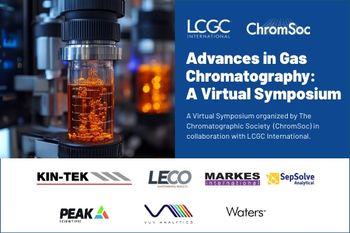
- The Application Notebook-06-01-2011
- Volume 0
- Issue 0
Sensitive Determination of Hydroxymethyl Furfural in Honey, Syrup, and Fructose Solution
Hydroxymethylfurfural (HMF), an organic compound containing aldehyde and alcohol functional groups, is naturally found in very low amounts in sugar-containing foods.
Hydroxymethylfurfural (HMF), an organic compound containing aldehyde and alcohol functional groups, is naturally found in very low amounts in sugar-containing foods. It is also produced during the heat treatment of foods from the dehydration of sugars such as glucose and fructose (1). Its presence is used as an indicator for spoilage, excessive heat-treatment, and adulteration. Many countries have imposed restrictions on the maximum levels of HMF in food and beverages because of the carcinogenic potential of similar compounds.
Commonly used HMF determination methods are based on spectral absorbance at 284 nm; however, direct absorbance measurements could have interferences from other compounds present in complex matrices. Here, we present a high-performance anion-exchange chromatography with pulsed amperometric detection (HPAE-PAD) method for HMF determination of HMF. This method exhibits broad linearity, low detection limits, high precisions, and good recovery of HMF, indicating that PAD is an appropriate detection technique for HMF.
Equipment
A Dionex ICS-3000 system was used in this study. HMF (10 μL) was separated on a CarboPac® PA1 column set, with electrolytically generated 50 mM hydroxide at 0.5 mL/min, and detected by PAD. The CarboPac PA1, a high capacity rugged column, delivered high resolution for HMF in a variety of matrices. Samples were prepared according to procedures described in Dionex Application Note 270 (2).
Figure 1: HMF in (A) thermally stressed honey, (B) fructose solution, (C) pancake syrup, and (D) HMF standard. Peaks (1) Glycerol (2) HMF (3) Glucose (4) Fructose (5) Sucrose.
Results
Figure 1(A) shows HMF (in a thermally stressed honey sample) detected at 4.8 min without interference from the other sugars. Figure 1(C) shows the separation of HMF from other degradation products in thermally stressed pancake syrup. HMF is a product of thermal degradation of fructose, the main constituent of pancake syrup. Complex matrices, such as syrup, may have later eluting peaks (at ~55 min in pancake syrup; not shown), which could interfere with subsequent injections if a shorter run time is used. This method was also applied for HMF detection in fructose. (HMF, present as an impurity in fructose, must be quantified and meet FCC and USP requirements before use as a food substance or in infusion fluids.) Figure 1(B) shows the separation of HMF from other thermal degradation products in fructose. The described method was linear in the range of 0.1–50 μg/mL. The LOD and LOQ were 0.04 μg/mL and 0.10 μg/mL, respectively. Retention time and peak area precisions were 0.5%, which can be attributed to consistent generation of high purity hydroxide by the eluent generator. Accuracy of the method was verified by determining recoveries of HMF in spiked honey over three days (average recovery 103%).
Conclusion
The described HPAE-PAD based method is accurate, reliable, requires no manual eluent preparation, and because of good sensitivity and consistent response, can be adapted for routine HMF analysis.
References
(1) H.D. Belitz, W. Grosch, 1999 Food Chemistry. Berlin: Springer-verlag.
(2) Dionex Corporation, Application Note 270, 2011, LPN 2677.
Dionex Corporation
1228 Titan Way, P.O. Box 3603, Sunnyvale, CA 94088
tel. (408) 737-0700, fax (408) 730-9403
Website:
Articles in this issue
over 14 years ago
Hydroxyethylstarches (HES)over 14 years ago
Aggregated Singletons for Automated Purification WorkflowNewsletter
Join the global community of analytical scientists who trust LCGC for insights on the latest techniques, trends, and expert solutions in chromatography.





